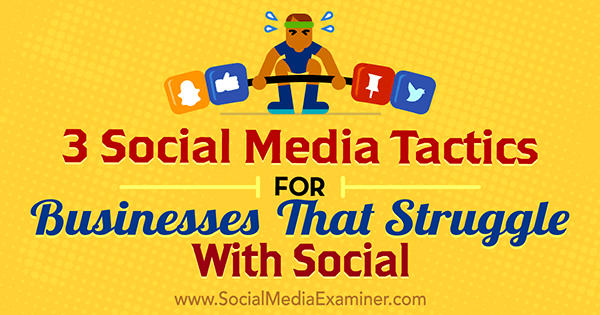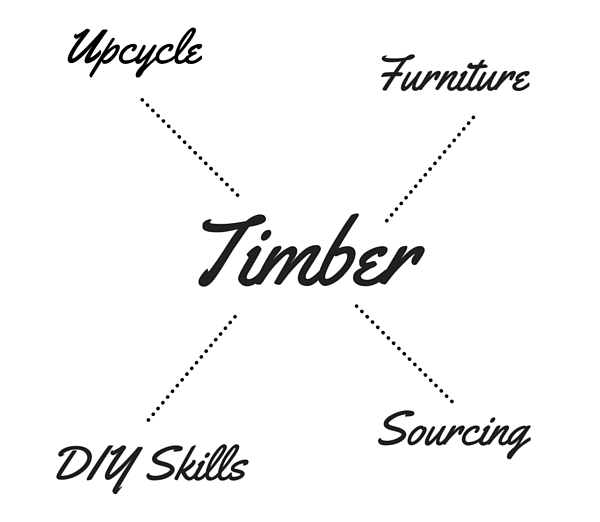Are you struggling to connect with your audience on social media? Do you feel like social media won’t work for your business? It’s not easy to put every business on social media, but the right approach can help even the most difficult cases reach their customers. #1: Tell an Outside-the-Box Story Many marketers create content around topics that relate to their value proposition, but that might be difficult to do if you’re in a “boring” industry. To generate content ideas for your business, grab a pen and paper and jot down your industry in the middle of the page. This lighthearted video shows the blossoming connection between a support rep and his customer. The video generated a huge amount of media attention and social shares, but most importantly, it attracted Zendesk’s ideal customers. Make sure to include the all-important call to action, and track the conversion rate of readers to subscribers and leads. Measuring live video engagement on platforms like Facebook is easy, and the viewer count is displayed within the content. How do you create content to appeal to your target audience?
Are you struggling to connect with your audience on social media?
Do you feel like social media won’t work for your business?
It’s not easy to put every business on social media, but the right approach can help even the most difficult cases reach their customers.
In this article, you’ll discover three ways any business can use social media.

#1: Tell an Outside-the-Box Story
Many marketers create content around topics that relate to their value proposition, but that might be difficult to do if you’re in a “boring” industry. The good news is that even if your industry isn’t inherently exciting, you can still create content that appeals to your audience.
Look to Shoulder Niches
Suppose you’re a timber merchant. You might start with content about wood quality, FAQs about timber, and suggestions on what to look for when buying timber. However, these ideas can only go so far.
This is where “shoulder niches” come in. Consider niches that are related to your industry. For example, you might create detailed blog posts and videos that show how to build different kinds of furniture. This type of content will attract top-of-funnel traffic and encourage social sharing to boost your reach.
To generate content ideas for your business, grab a pen and paper and jot down your industry in the middle of the page. Then add related keywords and topics around your industry keyword until you find an idea you can research further. For the timber example, you might end up with something like this:

Craft a Unique Narrative
Another way to appeal to your target audience is to tell a story. Zendesk effectively transformed the “boring” customer service space with their story of support ticket #24.
This lighthearted video shows the blossoming connection between a support rep and his customer. The video generated a huge amount of media attention and social shares, but most importantly, it attracted Zendesk’s ideal customers.
Measuring results for this type of content depends on the format. If you’ve created a video, you’ll want to measure views, engagement, and referral traffic. For a long-form blog post, track engagement metrics such as time on page and number of users. Make sure to include the all-important call to action, and track the conversion rate of readers to subscribers and leads.
#2: Deliver a Quick Call to Action Via Micro-content
People have short attention spans. Studies show that 50% of users stay on a website for less than 10 seconds. Short-form educational and entertaining content, called micro-content, can help appeal to a distracted audience.
How do you create micro-content that has a high chance of going viral? Make the content short, keep text to a minimum, and be sure to accompany it with visuals.

Always include a call to action as well. The connection you make with your audience should be the first step to tangible business goals. Micro-content should lead to a micro-yes, whether that’s clicking a link or providing an email address.
This Books-A-Million Instagram post grabs attention with a creative visual, the text is easy to digest, and it has a clear call to action.

With your calls to action in place, it’s easy to measure performance. Use UTM codes and shorten links to track each campaign. You can do this in Google Analytics under Acquisition > Campaigns > All Campaigns.
#3: Connect in Real Time With Live Video
Live video is a powerful addition to the customer retention toolbox that makes one-to-one connections even stronger. While Periscope is a key player, Facebook Live is becoming increasingly popular. Whenever you go live on Facebook, your existing fan base is notified.
What content should you stream live? Hold live Q&As to give customers a platform to post questions and get answers in real time. Broadcast product launches live to give your audience a sneak peek at new releases and features, making them feel part of something exclusive.
You can also show customers what your business looks like behind closed doors. Allow employees to express their personalities so they can form connections with customers. This is the foundation for increasing customer loyalty on social media.
General Electric has adopted the full nature of Facebook Live, sharing what happens behind the scenes with their audience. They used Facebook Live for “Drone Week” during the 2016 Rio Olympic Games. Through the eyes of a drone, they gave Facebook Live viewers a rarely seen perspective of how GE’s infrastructure helped make the Olympic Games run.

Measuring live video engagement on platforms like Facebook is easy, and the viewer count is displayed within the content.
Conclusion
Social media marketing requires patience if you’re trying to gain traction organically. That’s why many business owners and marketers supplement those efforts with paid advertising.
There are several ways to test ads on a small budget before scaling up. The first is to amplify your best-performing content. Look through your Google Analytics reports and run your domain through BuzzSumo. Set up campaigns that distribute the content with the highest engagement and conversion rates.
The second approach is to go beyond content and test campaigns that focus on bottom-of-funnel goals. Sharing free trials or discount coupons via Facebook or Twitter can help you generate qualified leads at all stages of the sales cycle.
Ad targeting is an area that many small- and medium-sized businesses underestimate. Twitter, Facebook, and LinkedIn all offer granular demographic and psychographic targeting information. For instance, to welcome remote workers into their store, a coffee shop could advertise to people ages 16 to 30 who like business and startup thought leaders.
Be sure to A/B test different approaches and rotate your ads regularly. See what copy, calls to action, and designs work best, and then double down on those with high conversion rates.
What do you think? How do you create content to appeal to your target audience? Please share your thoughts in the comments below.
COMMENTS